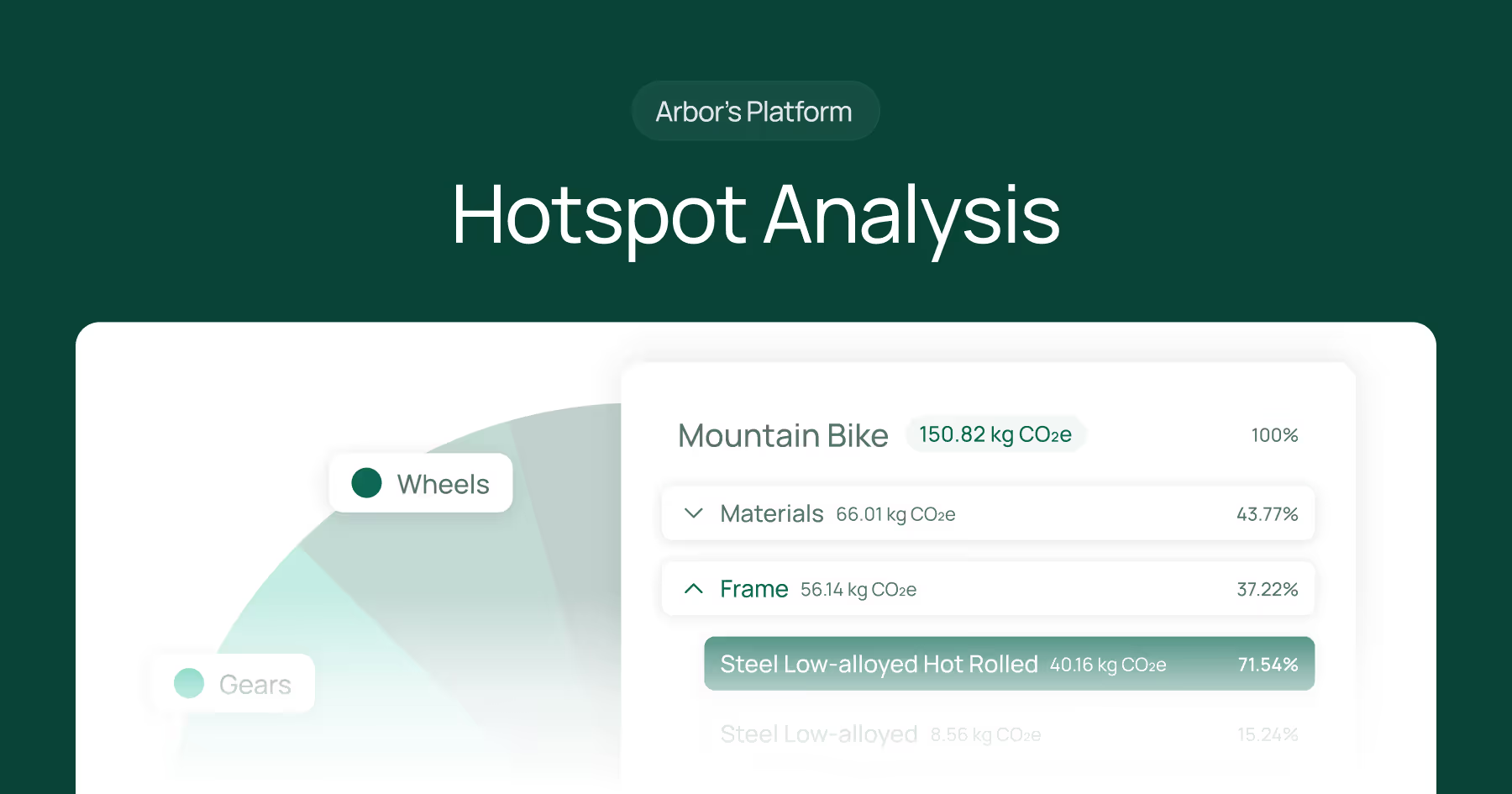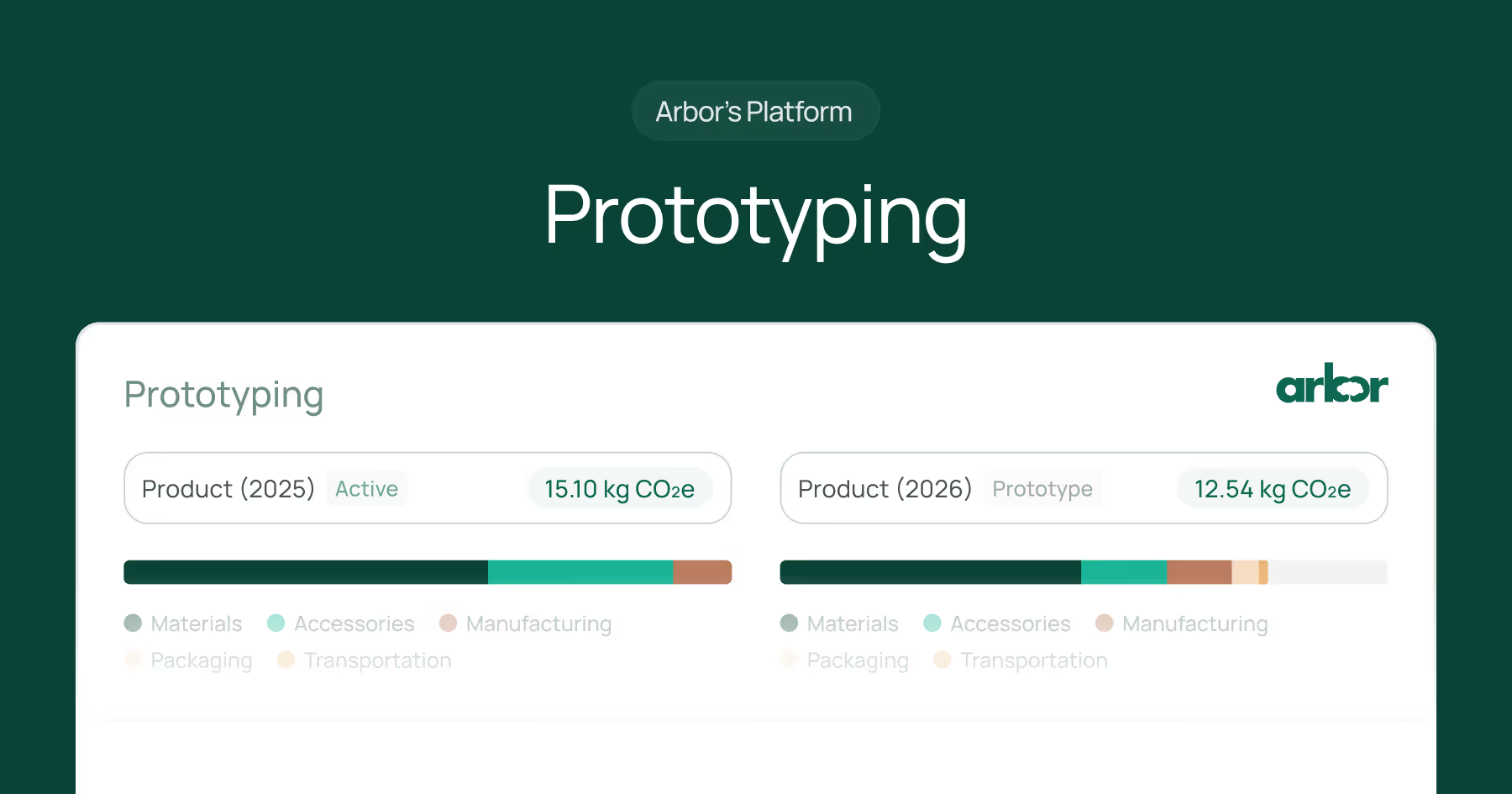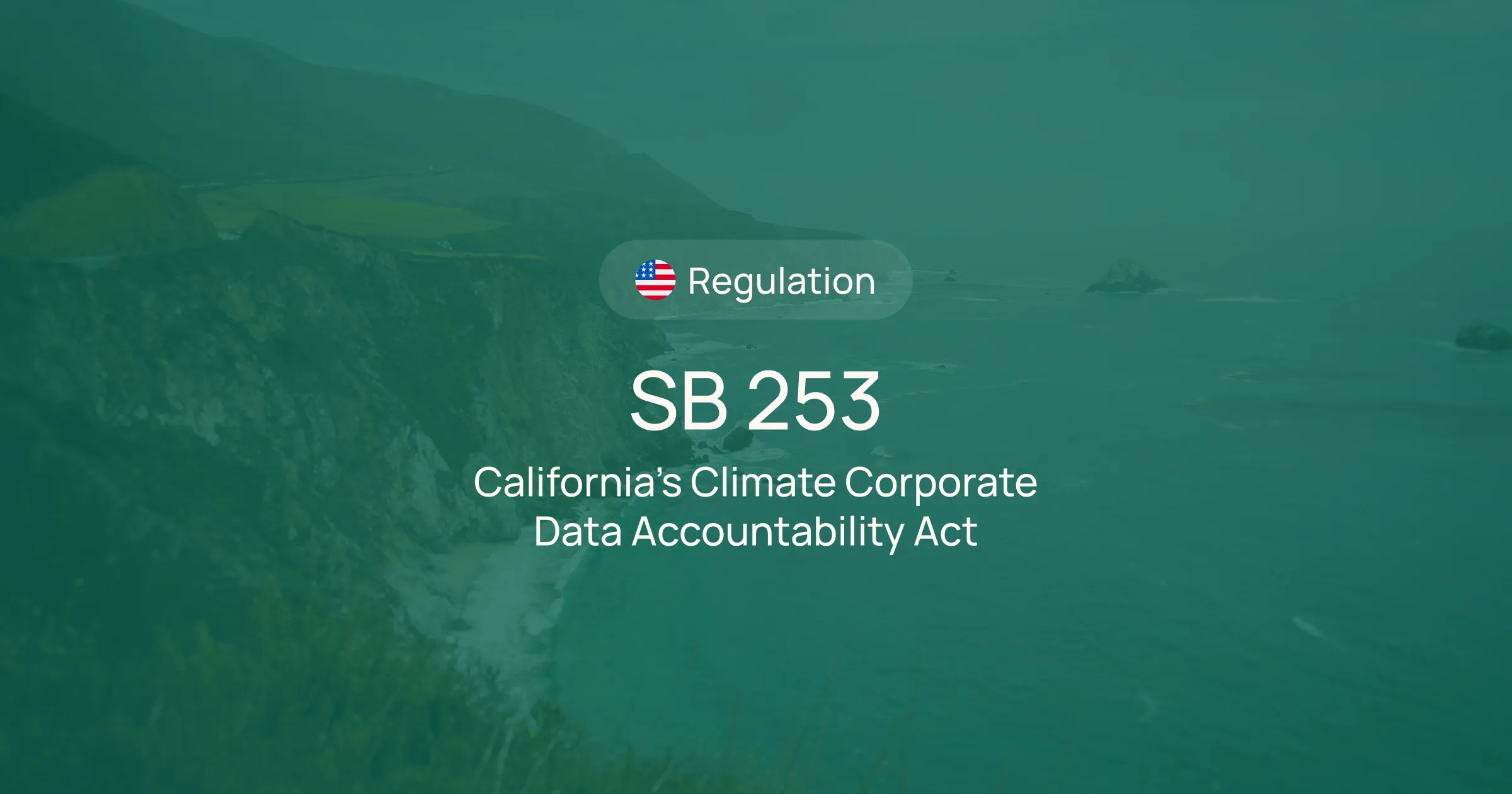As environmental concerns rise globally, customers and stakeholders are demanding that businesses reduce their overall carbon footprint, as well as the carbon footprint of their products. As a result, reducing the Carbon Footprint of Products (CFP) has become a key focus for businesses, and there are several other benefits to decarbonizing the carbon footprint of products.
After measuring your product’s footprint and determining the most impactful actions you can implement to maximize return on investment (ROI), there are several steps you can take to reduce your overall carbon footprint.
This guide will explore essential strategies to reduce emissions throughout a product's lifecycle.
What is Product Decarbonization?
Product decarbonization involves reducing the carbon emissions that a product generates during its creation, usage, and disposal stages (cradle to grave). The aim is to balance delivering quality and minimizing cost while minimizing environmental impact, fostering a more sustainable approach to business: a win-win for profit and the planet.
Ways to Decarbonize and Reduce a Product’s Carbon Footprint
Material Changes
Material changes are often one of the first steps that companies take when looking to decarbonize their supply chains. Switching traditional materials to “preferred materials” is a popular choice for many fashion brands, and many are switching from virgin polyester to recycled polyester or from conventional cotton to organic cotton.
Sustainable Material Sourcing
Making material changes often starts at the procurement or design level; opting for bio-based or recycled materials can reduce reliance on fossil fuels and significantly reduce the footprint of a product. For example, Unilever aims to reformulate products to use lower-GHG ingredients by 2030.
Optimizing Material Usage
Optimizing material usage benefits both the planet and your bottom line. Companies have several options for optimizing material usage, including simplifying product design, reducing or reusing waste in manufacturing, and reducing the quantity of packaging used. By increasing material efficiency, companies can purchase less raw materials and can also benefit from higher margins, with a reduction in the cost of manufacturing their products.
Eco-Friendly Packaging
Adopt packaging solutions with high recycled content and minimal material use to curb emissions associated with production and transportation.
Electrification
Machinery Electrification
Transitioning from fossil-powered machinery to electric machinery, especially in energy-intensive industries like manufacturing, can significantly reduce carbon emissions.
Grid Electrification
Electric equipment is only as good as the grid it uses. Companies can enter Power Purchase Agreements (PPAs) or work with suppliers to procure energy from renewable sources such as wind, solar or nuclear. This approach reduces dependence on non-renewable grid electricity and supports cleaner supply chains.
Electrify Vehicle Fleets
Transitioning company fleets to electric vehicles can lower GHG emissions. With a renewable energy-powered grid, vehicle electrification drastically reduces overall carbon output. Again, electric vehicles are only as effective as the grid, so ensure you have a green grid.
Upstream Supplier Changes
Collaborating With Your Existing Suppliers
Working with your existing suppliers is one of the best ways to decarbonize your supply chain. Suppliers typically have several options to reduce their footprint, thereby reducing your footprint! In the same way that your carbon reduction is likely driven by external requests, so is your supplier's reduction. You can foster long-term relationships by letting your suppliers know that carbon reduction is a priority and working with them to identify opportunities for reduction. Plus, you will also increase your opportunities to collect primary data from your supply chain!
Choosing Supplier Location
Supplier location can have massive carbon and cost implications. By choosing the most effective supplier location for your business, you can save on carbon generated in transportation and the supplier's local electricity grid.
Choosing Sustainable Suppliers
When suppliers are unwilling or unable to collaborate for emission reduction, it is sometimes necessary to evaluate competitive suppliers. By engaging with collaborative suppliers in setting and achieving emissions reduction targets, you create a ripple effect throughout your entire supply chain.
Optimize Product End of Life (EOL)
Reducing the end-of-life impact of products is often the most challenging to plan because it is, at least partially, out of your control. Nevertheless, there are several initiatives you can employ to reduce your product's carbon footprint and earn loyalty from your customers.
Buy-Back Programs
Implementing buy-back programs significantly reduces your product’s end-of-life impact, allows you to reduce your product’s raw material impact, and builds trust with customers. Buy-back programs allow you to control how products are disposed of at the end of life, including recycling the materials used in new products. The North Face recently announced that they would expand their used gear trade-in program to give credit for second-hand gear.
Design for Longevity
Designing products that last extends your product’s lifetime, allowing for a lower carbon footprint per day of use. Companies with products designed for planned obsolescence may benefit from shorter buying periods but indirectly increase their total carbon footprint and risk-reducing trust and loyalty with their customers. Repair programs can be implemented to extend your product’s lifetime, allowing for a lower total carbon footprint per day of use. Regulations like the EU’s Ecodesign for Sustainable Products Regulation are now required as of July 18th, 2024.
Design for Recyclability
Products designed for ease of recycling ensure they contribute less waste post-consumption and reduce the carbon footprint attributed to your product.
Repairability
Creating products designed to be repaired instead of discarded has a major impact on the overall carbon footprint of the product. Repairing products requires a smaller amount of material in comparison to manufacturing new products, so logically, the carbon footprint required to repair a product is significantly lower than that required to create a new one.
A Case Study of Successful Product Decarbonization
Real-World Example: Crocs
This past summer, Crocs, Inc. partnered with Arbor to reduce the carbon footprint of their classic clog.
Faced with the challenge of reducing carbon emissions in a measurable and verifiable way, Crocs, Inc. sought Arbor's expertise.
- Arbor helped Crocs compare two of their shoes using comparable CFPs (Carbon Footprint of a Product), which were verified against ISO 14067. Using the Arbor Platform, we broke industry records in only 3 days for full carbon measurement and third-party verification in 1.5 days, allowing Crocs to focus more of their resources on reducing their overall GHG impact.
- The analysis found that because of investments in sustainable materials, Crocs was able to reduce the CFP by 6%, leading to a 3% reduction in absolute emissions in their total inventory compared to a "business as usual" scenario.
- Now, Crocs is using the Arbor platform to accelerate the net-zero impact of their products and, as a result, their organization. They are doing this by prototyping products in Arbor's platform to test the ROI of several of the options in this blog. This allows them to make the most effective decisions to decarbonize their entire supply chain and avoid making investments that don't move the needle.
How Do You Decarbonize a Product with Arbor?
Arbor's platform supports businesses in identifying and managing their carbon emissions effectively. Here's how you can leverage Arbor:

- Automated Carbon Footprinting: With Arbor, calculating precise Product Carbon Footprints (PCFs) and conducting Life Cycle Assessments (LCAs) is simplified, enabling quick and informed decision-making.
- Pinpoint Emissions Hotspots: Arbor helps identify carbon-intensive areas within a product's lifecycle, clarifying where to apply decarbonization efforts. As highlighted in our with Crocs, a 6% reduction in one area can have profound organizational effects.
- Prototyping and Exploring Design Decisions: Companies use Arbor’s platform to prototype their products, allowing them to weigh potential product decisions with the associated costs and benefits. By experimenting with the carbon implications before acting, companies can save money on initiatives that don’t move the needle and choose the actions with the highest Decarbonization Return on Investment (DROI).
Benefits of Decarbonizing a Product’s Carbon Footprint
1. Cost Reduction
Streamlining the supply chain and optimizing resource use not only cuts emissions but also significantly lowers costs. Companies often find cost savings through increased efficiency in resource use, less waste, and decreased energy consumption.
2. Market Competitiveness
By offering products with a lower carbon footprint, businesses can meet the growing demand for sustainable products. This not only aligns with consumer values but can also capture a larger market share, differentiate your offerings, and justify premium pricing for sustainable goods.
3. Enhanced Brand Reputation
Being at the forefront of sustainability boosts brand image. Companies that commit to reducing their carbon footprint are often seen as leaders in corporate responsibility. This can strengthen relationships with customers and other stakeholders, fostering loyalty and advocacy.
4. Regulatory Compliance and Risk Reduction
Proactively reducing a product’s carbon footprint ensures that a business remains ahead of regulatory changes. It minimizes the risk of non-compliance fines and enhances a company's resilience to policy shifts in the push towards net zero.
5. Innovation and Product Development
Decarbonization encourages innovation, driving companies to seek new technologies, materials, and processes. This fosters a culture of continuous improvement and future-proofs the business against environmental and market shifts.
6. Long-term Sustainability
Beyond the immediate benefits, decarbonizing your product supports long-term environmental sustainability. By reducing emissions, your business contributes to global efforts to mitigate climate change, preserving resources for future generations and locking in the longevity of your enterprise.
Challenges in Reducing Product Carbon Footprints
Complex Supply Chains
Intricate supply chains are a significant hurdle. Consider the countless layers of suppliers, each with unique emission profiles. When dealing with international suppliers, this complexity is amplified by differences in regulatory standards and the availability of renewable resources. The lack of transparency can make it difficult to track and reduce emissions effectively.
Data Collection Difficulties
Gathering reliable and comprehensive emissions data is often time-consuming and labour-intensive. Many businesses lack the advanced tools to collect, analyze, and interpret this information thoroughly. This leads to incomplete or inaccurate data, making it challenging to set and meet carbon reduction goals.
Resource Constraints
Decarbonization requires investment—whether in new technologies, materials, or processes. For smaller companies, resource constraints regarding finances, expertise, and manpower can limit their ability to implement comprehensive decarbonization strategies.
Summary
By adopting a comprehensive approach encompassing supply chain optimization, renewable energy, enhanced product design, and stakeholder engagement, businesses can significantly reduce the carbon footprint of their products and gain several additional benefits.
With product carbon footprinting platforms like Arbor, these actions are streamlined, offering practical avenues to meet and exceed sustainability goals.
Request a demo to see how you can pinpoint product emissions and reduce them with Arbor.
Measure your carbon emissions with Arbor
Simple, easy carbon accounting.

FAQ about Reducing a Product’s Carbon Footprint
What does decarbonization mean for product design?
Decarbonization in product design means implementing strategies that reduce emissions throughout the supply chain, manufacturing process, and product lifecycle.
How does process electrification contribute to decarbonization?
Process electrification replaces fossil fuels with electricity, ideally from renewable sources, reducing direct emissions from manufacturing activities.
Is there a simple way to start decarbonizing a product?
Begin by assessing your supply chain and identifying key emission hotspots. Collaborate with suppliers and utilize platforms like Arbor for effective management.
Can decarbonization strategies be beneficial for business growth?
Yes, achieving decarbonization goals can lead to cost savings, improved brand reputation, and better market positioning. It supports compliance with regulations and meets consumer demand for sustainable products.




.webp)











%20Arbor.avif)





%20Arbor.avif)


.avif)






%20Arbor%20Canada.avif)

.avif)
%20Arbor.avif)
.avif)






_.avif)
.avif)
%20Arbor.avif)



%20Software%20and%20Tools.avif)





.avif)
.avif)




%20EU%20Regulation.avif)












.avif)


%20Arbor.avif)









_%20_%20Carbon%20101.avif)







.avif)

.avif)
.avif)



.avif)








